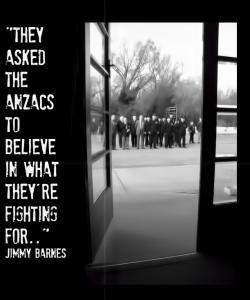Sale on canvas prints! Use code ABCXYZ at checkout for a special discount!

Every New Zealand town or city has one - a modest memorial somewhere in the middle of town, dedicated to our war-time soldiers who did not return and on ANZAC day honored by those who did.
Anzac Day ,April 25, marks the anniversary of the first campaign that led to major casualties for Australian and New Zealand forces during the First World War. ANZAC Day (Australian and New Zealand Army Corps) is one of the most important national holidays for both Australia and New Zealand, a rare instance of two sovereign countries not only share the same remembrance day, but making reference to both countries in its name.
In 1915, Australian and New Zealand soldiers formed part of an Allied Expedition that set out to capture the Gallipoli Peninsula in Turkey. A plan by Winston Churchill to open the way to the Black Sea for the Allied navies.
ANZAC forces landed at Gallipoli on April 25 meeting fierce resistance from the Ottoman Army and what had been planned as a bold strike to knock the Ottomans out of the war quickly became a stalemate, and the campaign dragged on for eight months. At the end of 1915, the Allied forces were evacuated after both sides had suffered heavy casualties and endured great hardships. The Allied casualties included 21,255 from the United Kingdom, an estimated 10,000 dead French soldiers, 8,709 from Australia, and 2,721 from New Zealand. News of the landing at Gallipoli made a profound impact on Australians and New Zealanders at home and April 25 became the day on which they remembered the sacrifice of those who had died in the war. The meaning of the day has been further broadened to include those killed in all the military operations in which New Zealand and Australia have since been involved.
As a journalist I went to about 50 ANZAC services over the years. Services would include a bag-pipe led parade of veterans that were still mobile, a wreath laying ceremony, prayers and speeches. Some big-city services would begin a dawn, around 6am, but for the most part they were held in small rural towns, many with populations barely over 60 people. A district of five or six towns would stagger their services throughout the morning so they could share a minister, a trumpet player, the chairman of the Royal New Zealand Returned and Services' Association (RSA), (the New Zealand version of the Veterans Administration)
and the media. I have fond memories of the trumpet player, the RSA Chairman and the minister sharing a car and totally thrashing the speed limit in order to stay on schedule, with me or one of my colleagues in hot pursuit. If they were running late a police escort was not unheard of.
When the services were over most of the town would head to the RSA Club for whiskey and/or a cup of tea and a cooked breakfast.
Many New Zealanders and Australians make the pilgrimage to Turkey and Gallipoli Beach were a dawn service is also held. Thousands spend the night wrapped in sleeping bags on Gallipoli Beach to wait for the sun to rise and services to begin.